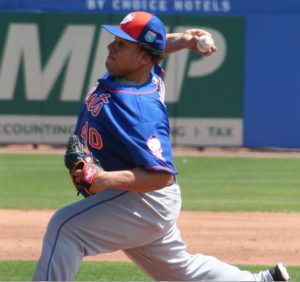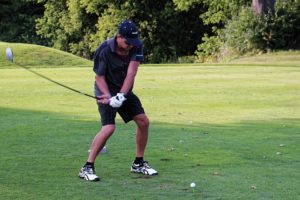In Part II of this series I’ll be discussing the glove arm and its role in high velocity throwing. If you missed Part I, where I talked about the importance of the back leg in high velocity throwing, check it out here.
The glove arm plays a big role in high velocity throwing as it contributes to various aspects of the movement. It helps create tension, movement sequencing, and disconnection. What do all of these terms mean in the context of throwing a baseball exceptionally fast? Let’s dive in.
What Does an Ideal Glove Arm Do?
When the hands separate, the glove arm should begin to create tension through internal rotation and build that tension as long as possible before externally rotating just prior to, or simultaneously with, foot strike. At this point, the glove will fold down and basically stop moving as the body continues to rotate. This optimizes arm speed, as the body wants to fully decelerate the previous piece before accelerating the next piece.
Movement Sequencing
As we talked about in Part I, movement sequencing, the order in which movements occur, is extremely important to achieving maximum distance or velocity, and is often the major separator between mediocre and elite velocity. When movements occur in a specific order you are able maximize the force exerted into the implement being thrown or struck. If movements are not sequenced properly, energy “leaks” can occur as the maximum amount of energy will not be transferred to the implement.
In the case of the glove arm, ideally, external rotation will be delayed as long as possible. When external rotation or the “fold down” of the glove does happen, that signals the throwing arm to externally rotate and start moving forward. At this point the glove arm will be almost fully decelerated, which allows the next movement to occur, the throwing arm.
The longer the glove arm can stay internally rotated and delay external rotation, the greater potential there is for; hip-shoulder separation, greater range of motion for acceleration forces to act on the ball, and maximum velocity.
This is similar to the “lag” in a golf swing. Lag happens when the hands have moved past the ball, the body has rotated, and the golf club is still behind the ball, allowing for a greater distance through which acceleration forces can be applied, and thereby increasing ball distance.
The take-home point from this is that the better movements are sequenced, the more time we can allow for acceleration forces to act on the ball.
What Can Go Wrong?
Now that we have talked about what an ideal glove arm does, let’s talk about some inefficiencies.
The first fault I often see is the glove arm pulling around rather than folding down. This forces the upper body to rotate too early, diminishing hip-shoulder separation, and bringing the throwing arm through too early, diminishing the “lag.” That leads to the upper body spinning off, rather than rotating perpendicularly with the lower body. This creates an inefficient energy transfer due to the smaller range of motion through which acceleration forces can act on the ball.
The second fault I frequently see is basically the opposite of the first fault, where the glove arm blocks shoulder rotation. When the glove does not properly fold down and decelerate, the throwing arm must attempt to decelerate early, which stresses the shoulder unnecessarily and lowers velocity. The posterior shoulder musculature must decelerate the throwing arm after it has reached internal rotation velocities of 7,000 to 9,000 degrees per second (Seroyer et al., 2010). So any inefficiencies in the deceleration phase can lead to injury.
Fixing the Glove Arm
So how do you go about fixing these issues? Drills like the “marshall” or “pivot pickoff” are helpful as they dissociate the glove arm from the throwing arm, as well as the hips from the upper body. This can help athletes “feel” their arms working independently from each other, or being disconnected.
In addition to this simple drill, using a heavy ball or clamp in the glove side hand may help as well. You can blend this,-or take a few throws with the heavy ball instead of a glove, followed by a few throws with a glove, in order to get a better feel for glove side mechanics. The greater tension that will be created in the glove hand can help athletes feel the contrast between the two sides, relaxation in the throwing hand and tension in the glove hand.
Here is a video to give you a visual.
If your glove arm movements don’t look like those of a high velocity thrower, give these drills a try and get moving in the right direction.
Stay tuned for part III!
Resources
Photos:
“Bartolo Colon 2016 II.jpg” by Terry Foote CC BY-SA 4.0
Seroyer S, Nho S, Bach B, Bush-Joseph C, Nicholson G, Romeo A (2010) The Kinetic Chain in Overhand Pitching
Its Potential Role for Performance Enhancement and Injury Prevention. Sports Health.


